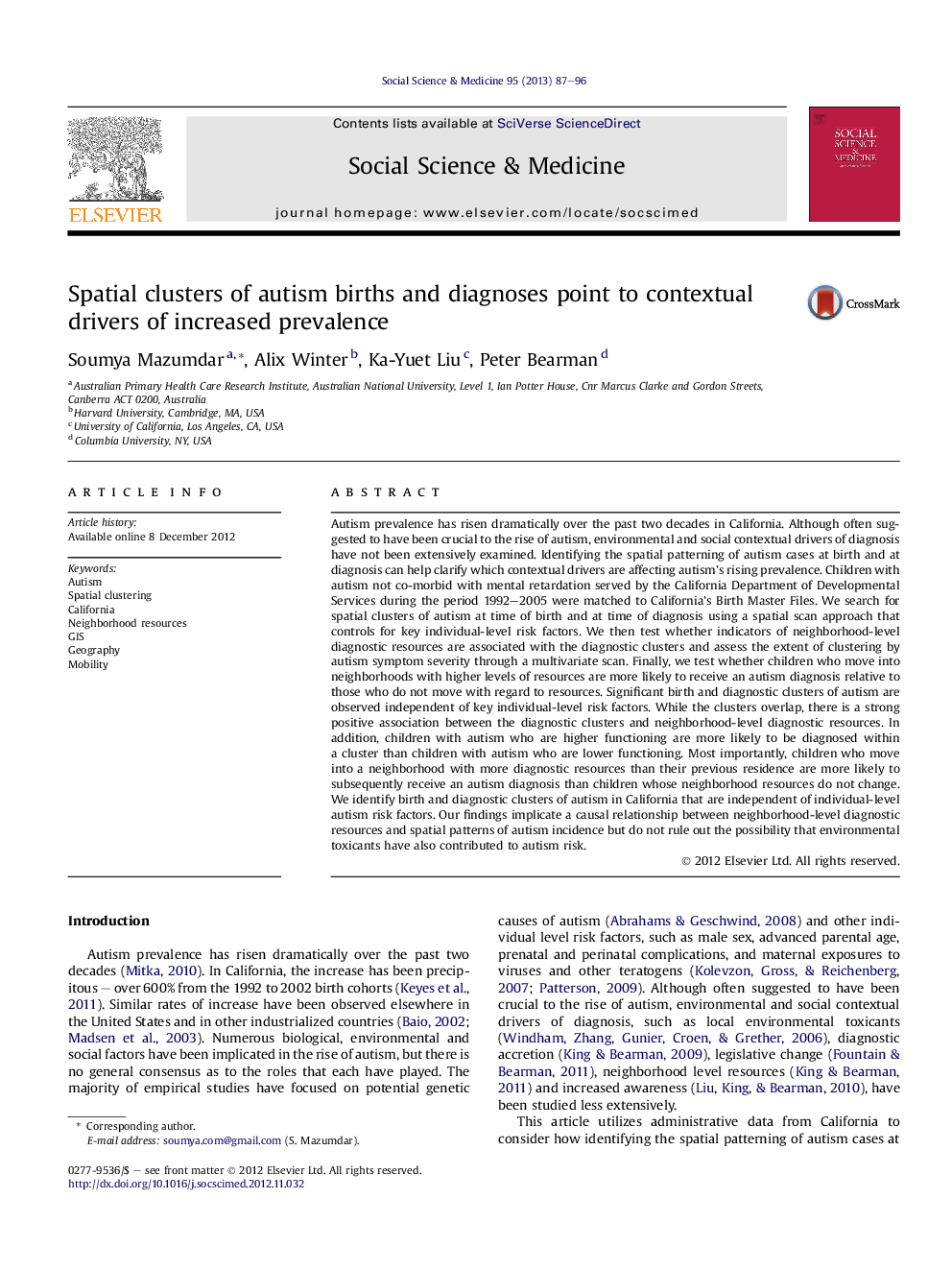| کد مقاله | کد نشریه | سال انتشار | مقاله انگلیسی | نسخه تمام متن |
|---|---|---|---|---|
| 952295 | 1476073 | 2013 | 10 صفحه PDF | دانلود رایگان |

Autism prevalence has risen dramatically over the past two decades in California. Although often suggested to have been crucial to the rise of autism, environmental and social contextual drivers of diagnosis have not been extensively examined. Identifying the spatial patterning of autism cases at birth and at diagnosis can help clarify which contextual drivers are affecting autism's rising prevalence. Children with autism not co-morbid with mental retardation served by the California Department of Developmental Services during the period 1992–2005 were matched to California's Birth Master Files. We search for spatial clusters of autism at time of birth and at time of diagnosis using a spatial scan approach that controls for key individual-level risk factors. We then test whether indicators of neighborhood-level diagnostic resources are associated with the diagnostic clusters and assess the extent of clustering by autism symptom severity through a multivariate scan. Finally, we test whether children who move into neighborhoods with higher levels of resources are more likely to receive an autism diagnosis relative to those who do not move with regard to resources. Significant birth and diagnostic clusters of autism are observed independent of key individual-level risk factors. While the clusters overlap, there is a strong positive association between the diagnostic clusters and neighborhood-level diagnostic resources. In addition, children with autism who are higher functioning are more likely to be diagnosed within a cluster than children with autism who are lower functioning. Most importantly, children who move into a neighborhood with more diagnostic resources than their previous residence are more likely to subsequently receive an autism diagnosis than children whose neighborhood resources do not change. We identify birth and diagnostic clusters of autism in California that are independent of individual-level autism risk factors. Our findings implicate a causal relationship between neighborhood-level diagnostic resources and spatial patterns of autism incidence but do not rule out the possibility that environmental toxicants have also contributed to autism risk.
► In California, there are clusters of births of children later diagnosed with autism and of autism diagnoses.
► The clusters are located in neighborhoods of high socio-economic status with many resources related to child development.
► Children with autism who are higher functioning exhibit stronger clustering than children with autism who are lower functioning.
► Moving to a neighborhood of high socio-economic status or high resource density increases a child’s risk of autism diagnosis.
Journal: Social Science & Medicine - Volume 95, October 2013, Pages 87–96